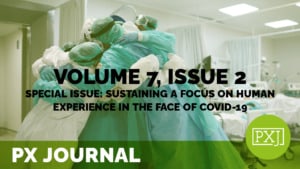The Role of Cultural Competence in Delivering Positive Patient Experiences

This white paper visits the increasing importance of cultural competence and cultural sensitivity in the healthcare sector and how it impacts the experience of patients, their families and support groups. The paper first explores the key elements of cultural competence and its impact on the healthcare setting, offering important facts on the changing demographics of the patient population. Suggestions are provided for the development of successful learning programs on cultural competence, including the importance of incorporating the what, why and how in cultural competence training. Finally, four steps are offered for moving to action in addressing cultural competence in healthcare organizations: awareness, knowledge, skills and interaction. The paper closes by suggesting that the impact of cultural competence on the patient experience reveals the power of the personal relationships central to the healthcare process. It is about how each and every patient is offered the care, kindness and respect they deserve.
Related content
-
 Infrastructure & Governance | Patient Family & Community Engagement
Infrastructure & Governance | Patient Family & Community EngagementStarting a Pediatric Parent Advisory Council: Overcoming Adversity
Creating a Pediatric Parent Advisory Council (PPAC) can be a transformative way to enhance family-centered care. Join us as we share our journey from the early stages of conceptualizing a PPAC, through navigating the challenges of the COVID-19 pandemic, to launching a council that has grown and thrived since August 2021. With 16 active parents
Learn more -
 Culture & Leadership | Infrastructure & Governance
Culture & Leadership | Infrastructure & GovernanceDeveloping Multidisciplinary Committees for Patient Experience Effectiveness
2pm ET / 1pm CT / 12pm MT / 11am PT – This webinar explores how to move beyond recognizing the value of patient experience to embedding patient- and family-centered care into organizational culture. Learn how Patient Experience Committees, including a successful Cleanliness Committee, have driven improvements in HCAHPS scores, engagement, and collaboration. Discover strategies
Learn more -
 Infrastructure & Governance
Infrastructure & GovernanceA comprehensive call center supporting safe, efficient operations during a pandemic
Learn more
